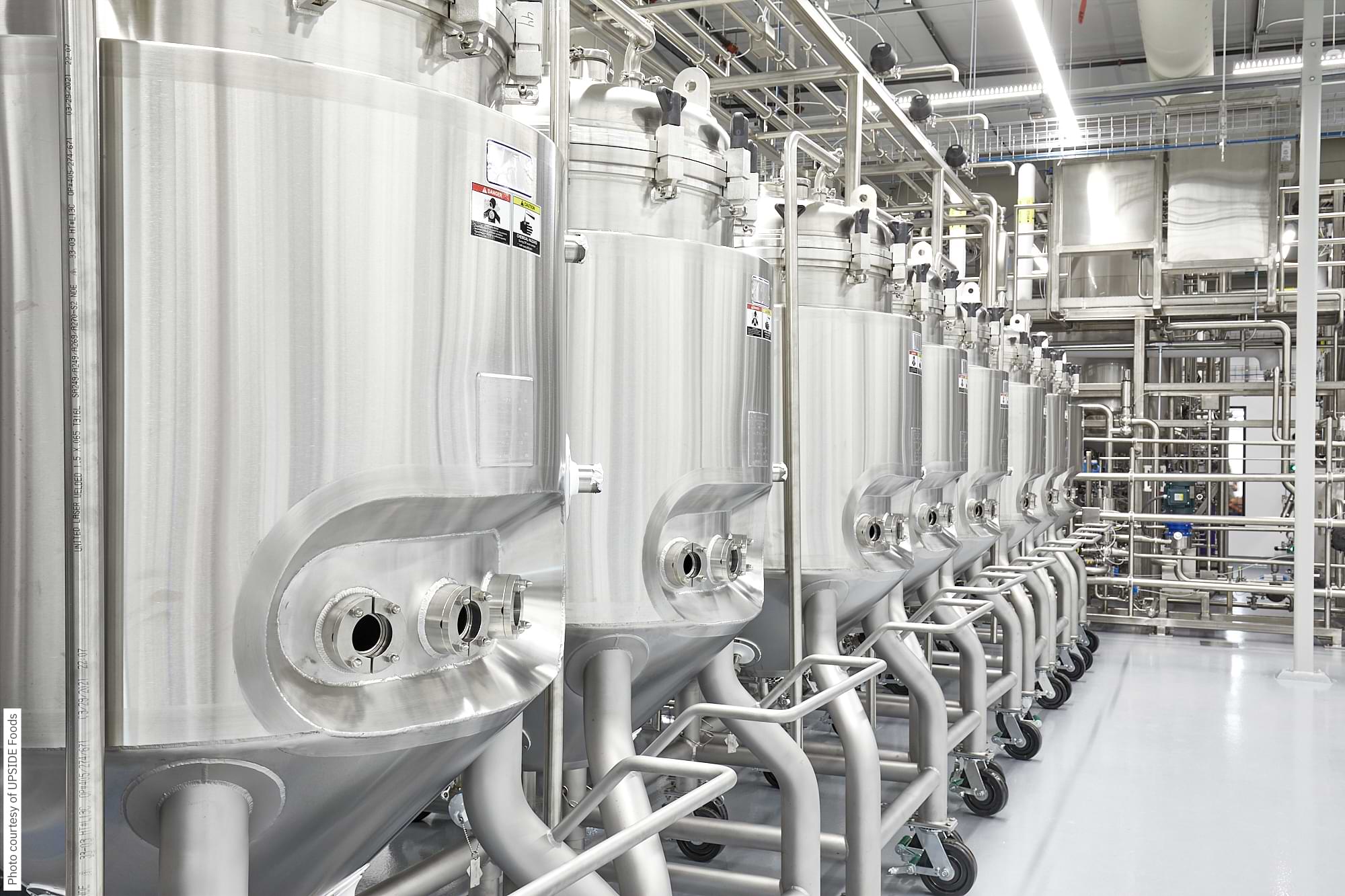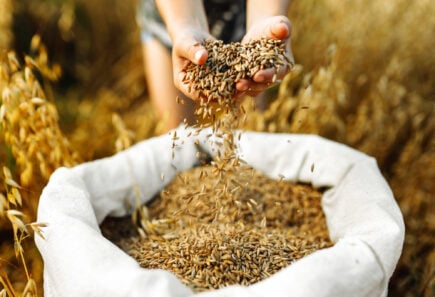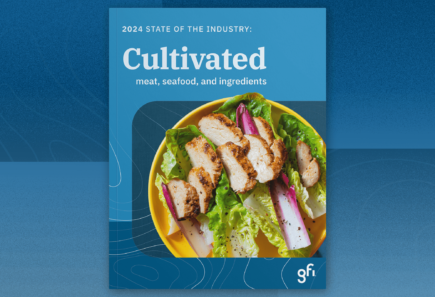
Addressing challenges of cultivated meat
Cultivated meat provides a viable solution for consumers seeking genuine animal meat without harming the environment, health, or food security, but challenges must be addressed to realize its full potential. By prioritizing research and allocating resources to tackle these obstacles, we can effectively navigate uncertainties and transform meat production for a sustainable future.
Cultivated meat is just getting started
It’s promising to see increasing recognition among both the public and private sectors of the potential of cultivated meat to meet long-term global goals in the areas of climate, biodiversity, global health, and food security. Advances in the cultivated meat industry are happening fast. More researchers and funding are flowing into the field. As the policy and regulatory landscape takes shape, bold strides toward commercialization have been taken, with cultivated meat products now having received regulatory approval on multiple continents.
Consumers want sustainable options, but they don’t want to compromise on taste or price. Meat cultivated directly from animal cells can offer consumers a way to consume genuine animal meat while minimizing adverse impacts on the environment, global health (e.g., antibiotic resistance, pandemic risk), and food security. Still in its formative years, cultivated meat holds the potential to produce meat in vastly more efficient and safer ways than conventional meat production.
This critically important young industry is doing what young industries do—learning, testing, fixing, solving. Repeat. Navigating and building the path to scale and adoption will take years.
Addressing food safety is a top priority
Among the top challenges and priorities for regulators and the cultivated meat industry will be establishing clear and harmonized regulatory pathways that ensure food safety.
In the United States, FDA is responsible for ensuring the safety of foods available in the U.S. market. Together with USDA, FDA will regulate the sale of cultivated meat to ensure consumer safety (seafood will be regulated by FDA exclusively). Following the completion of FDA’s rigorous pre-market safety review for each cultivated meat product, those products complete the same processes conventional meat companies follow to ensure safe product production and handling prior to sale. For both UPSIDE Foods’ and GOOD Meat’s cultivated chicken, the successful completion of FDA’s pre-market safety review in 2023 demonstrated that it is at least as safe as conventional chicken. Before any products reach consumers, robust protections exist, including stringent FDA and USDA inspections and approval processes identical to those for the conventional meat industry.
In 2024, Israel’s Ministry of Health issued a pre-market approval for the world’s first cultivated beef product produced by Aleph Farms (but additional regulatory steps remain before it can be sold), and the Singapore Food Agency approved cultivated quail produced by Vow, bringing the total number of cultivated meat products to pass rigorous safety evaluations to four. As of mid-2024, additional cultivated meat products are under regulatory review in at least nine countries or regions, including the European Union, the United States, Singapore, Israel, Australia, New Zealand, Switzerland, the United Kingdom, and South Korea. Each of these countries has established robust regulatory pathways for cultivated meat, while others around the world are still in development.
Drawing on the expertise of leading scientists from 15 countries, the FAO’s recently published Report on Food Safety Aspects of Cell-Based Foods adds to the growing body of literature on cultivated meat manufacturing, food safety, and regulation. The in-depth report can assist companies and countries in developing and harmonizing evidence-based approaches to risk management and encourages greater collaboration and information sharing to advance work in this area.
While contamination is normal and expected in R&D phases when lots of variables are being tweaked and optimized, the production environment is far more stringent and specifically designed to prevent contamination. As demonstrated by data submitted to the FDA from UPSIDE Foods and GOOD Meat, successful production runs for cultivated meat test negative for pathogens such as Salmonella and result in significantly lower microbial counts compared to conventional chicken. Consumers and retailers can rest easy knowing that cultivated meat products that reach store shelves and tables will be safe for consumption.
Controlling for contamination, especially as it relates to cost and scaling, is one of the critical issues the industry must get right. As more companies move toward commercialization, GFI will be closely monitoring this space, and if needed, ready to fund future research that could address this or any other challenge critical to advancing the field. We also stand ready to assist regulators in developing responsible standards to ensure these products meet consumers’ expectations and needs.
Addressing resources, efforts, and the future outlook of cultivated meat
Like any transformative technology or industry in its early days, there remain legitimate questions and uncertainties for the cultivated meat industry to tackle and overcome. Channeling resources, time, and attention toward research efforts to resolve these uncertainties is key to building a more stable and just protein supply.
As the industry tackles big questions, progress marches on. Across the areas of science, innovation, talent, and public and private sector support, major advances are growing momentum for this still early-stage industry.
- Major path to market milestones: In the U.S., FDA completed its first premarket reviews for cultivated meat products (UPSIDE Foods’ and GOOD Meat’s cultivated chicken). This brought cultivated meat one step closer to consumers’ plates—a major de-risking signal for investors. In Singapore, where commercial sales of cultivated meat were first approved in 2020, GOOD Meat’s cultivated chicken (now approved for sale with serum-free media) continues to be served in a retail outlet, allowing consumers to cook at home with cultivated meat for the first time. In January 2024, Israel became the third country to advance the approval of cultivated meat sales, and the first to advance cultivated beef by issuing a premarket approval from its Ministry of Health to Aleph Farms. As of April 2025, additional regulatory steps remain (inspection and labeling) prior to the product being sold in Israel. In 2025, Mission Barns became the first company in the world to receive regulatory clearance for cultivated pork fat from the U.S. Food and Drug Administration (FDA) and the third company to receive a regulatory green light in the United States for cultivated meat. Upon obtaining a U.S. Department of Agriculture (USDA) grant of inspection for their production facility, and label approval from USDA, Mission Barns plans to launch meatball and bacon products, made from a combination of plant-based proteins and small amounts of their cultivated pork fat, at select restaurant and retail locations. Also in 2025, Vow’s cultivated quail completed an initial Food Standards Australia New Zealand (FSANZ) safety review and is pending final approval from the Australia and New Zealand Food Regulation Ministerial Council.
- Industry growth, including involvement by conventional meat and food companies: There are now at least 174 cultivated meat companies across over 30 different countries in every major world region. In addition, there are more than 70 diversified companies with involvement in the cultivated meat industry, including the world’s top three meat companies (by revenue).
- Advances in science, technology, and the research ecosystem: Ground-breaking research on cell lines, cell culture media, and scaffolding are demonstrating the path to cost reduction and efficient scaling. New and updated life cycle assessments found that cultivating meat is a more efficient form of meat production compared to conventional meat, resulting in less land use and reduced air and water pollution. Universities worldwide launched seven new alternative protein courses and one certificate program.
- Government and philanthropic investment: Israel launched the largest government-backed cultivated meat consortium to date, involving the country’s top food producers and academic labs. The Netherlands announced $65 million in funding for cultivated meat and precision fermentation, the world’s largest-ever public investment in the cellular agriculture field. The United States directed nearly $6 million in research funds to alternative protein R&D and included cultivated meat in its National Strategy for Advanced Manufacturing and Bold Goals for U.S. Biotechnology and Biomanufacturing reports. California approved the first-ever state investment in cultivated meat research, directing $5 million to R&D across three universities.
- Growing consumer awareness and interest: Consumer insights and market analysis point to growing international interest in cultivated meat adoption. Companies and consumers continued to coalesce around “cultivated” nomenclature: More than 30 companies in Asia Pacific signed a Memorandum of Understanding agreeing to use “cultivated” terminology in English and its cognates in other languages. A recent consumer research study commissioned by GFI also supported “cultivated” nomenclature.
Despite these milestones, the cultivated meat sector still has miles to go to reach its full potential. Funding and workforce constraints still pose two of the biggest bottlenecks for scientific innovation and scaling. As companies continue to innovate, and as more talent, research funding, and investments flow into alternative proteins, the entire sector will accelerate, offering the world a far more sustainable food future.
Addressing global challenges
Cultivated meat and other alternative proteins have the potential to play a leading role in the transition ahead. But it requires massive changes in food and agriculture.
The early days of emerging innovations across any industry should be challenging. That’s exactly what leads to progress. Like renewable energy and electric vehicles, major challenges must be overcome for cultivated meat to scale. It took a long time to get where we are on each of those fronts, with an overwhelming amount of trial and error in the early days. In each case, government support was critical to helping the entire industry learn from those trials together, and ensure that breakthroughs anywhere advanced progress everywhere. We need that same kind of support for cultivated meat.
By 2050, the global population will approach 10 billion, and demand for meat is projected to double from 2012 levels. Cultivated meat at scale can help meet this demand while simultaneously addressing climate, global health, biodiversity, and food security challenges. If the world is to solve these challenges, making meat differently via alternative proteins will be as essential as the global transition to renewable energy. When compared to conventional meat, cultivated meat has the potential to dramatically reduce emissions, use far less land, eliminate the need for antibiotics in our food system, reduce the risk of new pandemics, and feed more people with fewer resources:
- Climate and biodiversity: Compared to conventional beef, cultivated meat has the potential to slash emissions by 92 percent, require up to 90 percent less land, use 66 percent less water, and result in lower environmental impacts related to air pollution, acidification of soils, and marine eutrophication.
- Global health and food security: Alternative proteins provide similar amounts of protein and nutrients as conventional meat, without contributing to pandemic risk or antibiotic resistance, and feed more people with fewer resources. Because they require far less land and water, alternative proteins can increase food security by eliminating the inefficiencies of cycling crops through animals to produce protein.
Governments allocate billions of dollars annually to renewable energy and global health research. In the same spirit, funding open-access R&D for safer and more efficient protein production is crucial. And yet, cultivated meat specifically has seen just over $3.1 billion in capital invested in all of human history, which has been spread across a mere 100 companies. That’s less than the cost of one battery factory for electric vehicles, and it’s a tiny fraction of the $1.7 trillion that was invested in clean energy last year.
Historical evidence consistently demonstrates the importance of public and private R&D for scientific advancement, social progress, and economic growth—creating new markets, generating jobs, and driving innovative solutions. By significantly increasing public investment in cultivated meat R&D and establishing government-funded research and manufacturing centers, we can unlock tremendous potential and catalyze a more sustainable protein future.

Climate solutions
Alternative proteins play an essential role in meeting global climate goals. Learn more about what you can do to help change how meat is made.

Environmental benefits of alternative proteins
How eco-friendly are plant-based and cultivated meats? Explore their climate impacts and resource requirements relative to conventional meat.

Alternative proteins are a global food security solution
Amid a global grain shortage and skyrocketing food prices, alternative proteins can make the global food system more efficient and resilient.

Blog
Let’s solve it together: The X-factor impact of alt proteins on the biggest challenges of our time
Inspiring organizations and individuals around the world are reducing emissions, saving lands and waters, protecting public health, and increasing food security. Yet threats still mount. Alt proteins are essential for…
Additional resources
Header image courtesy of UPSIDE foods





